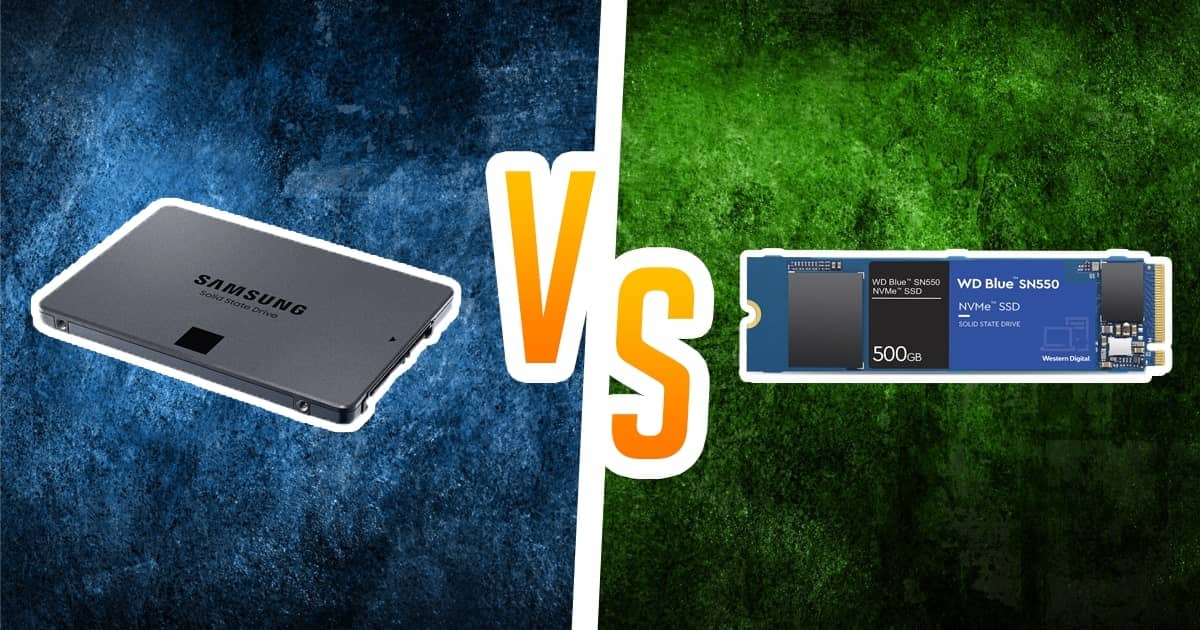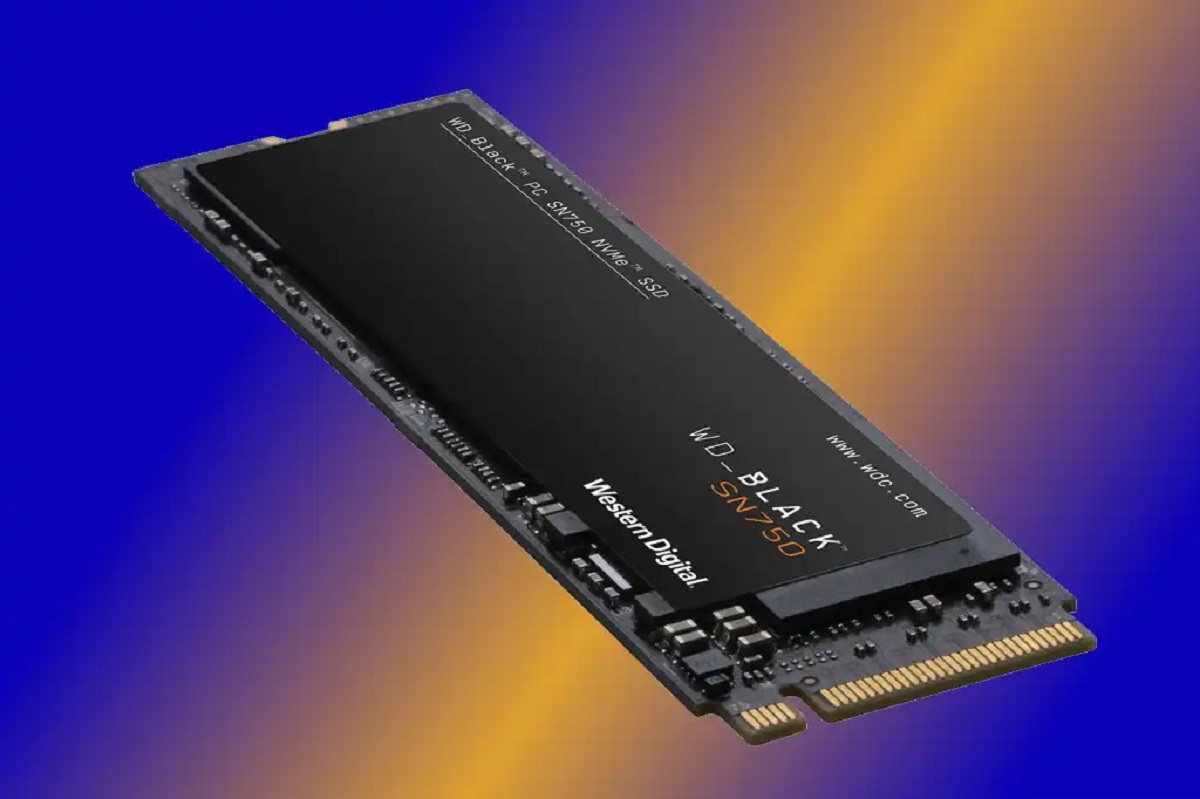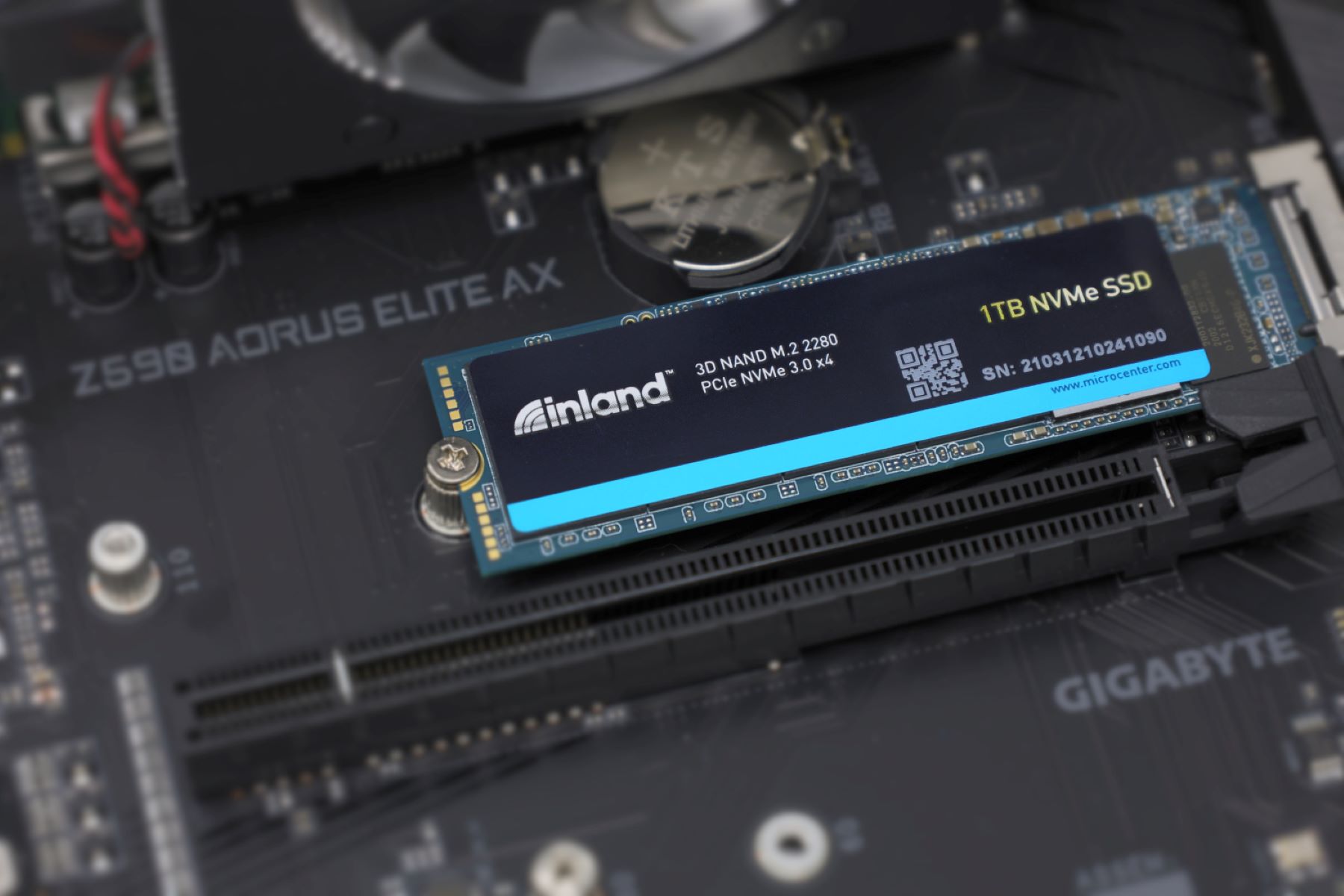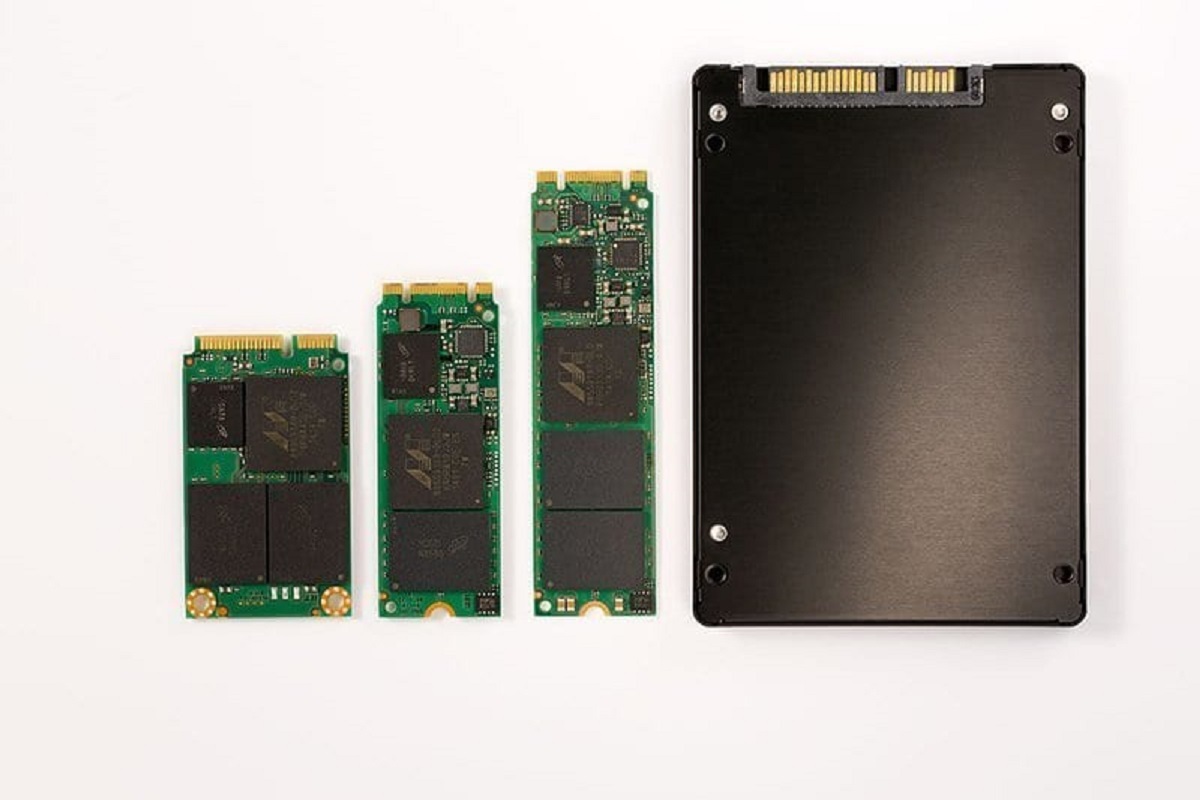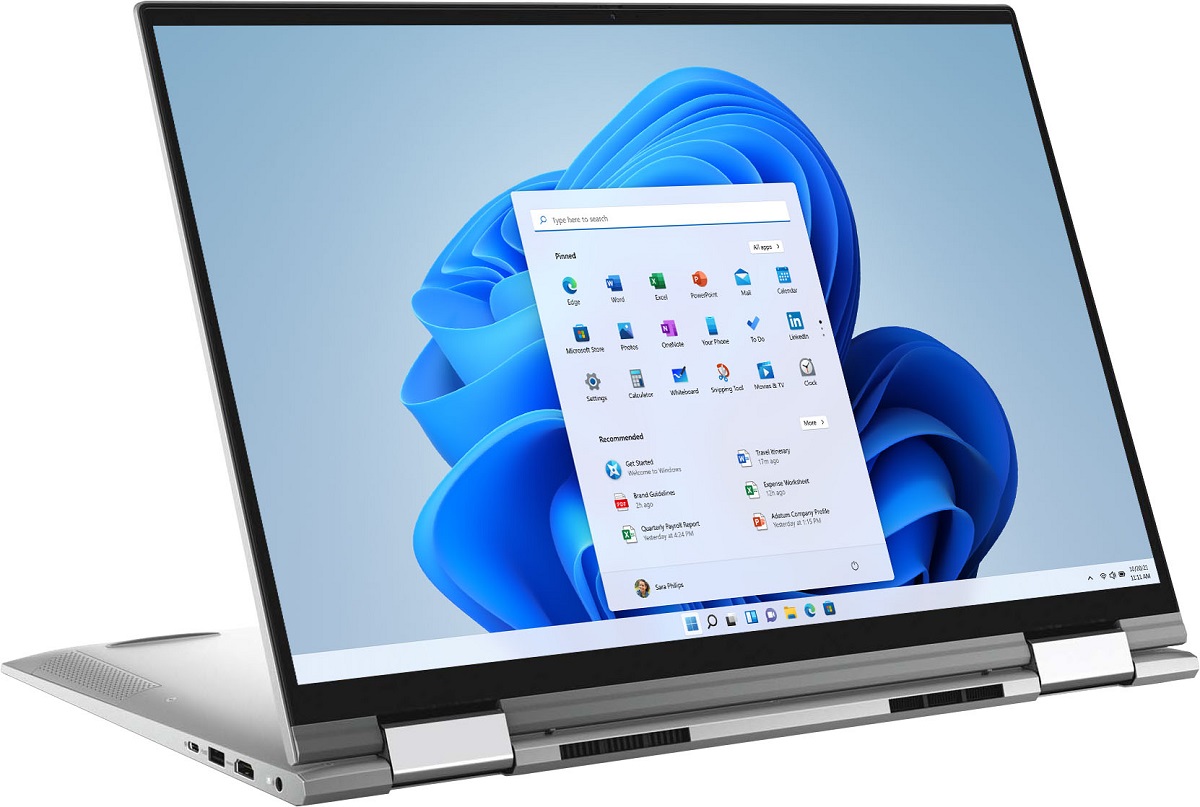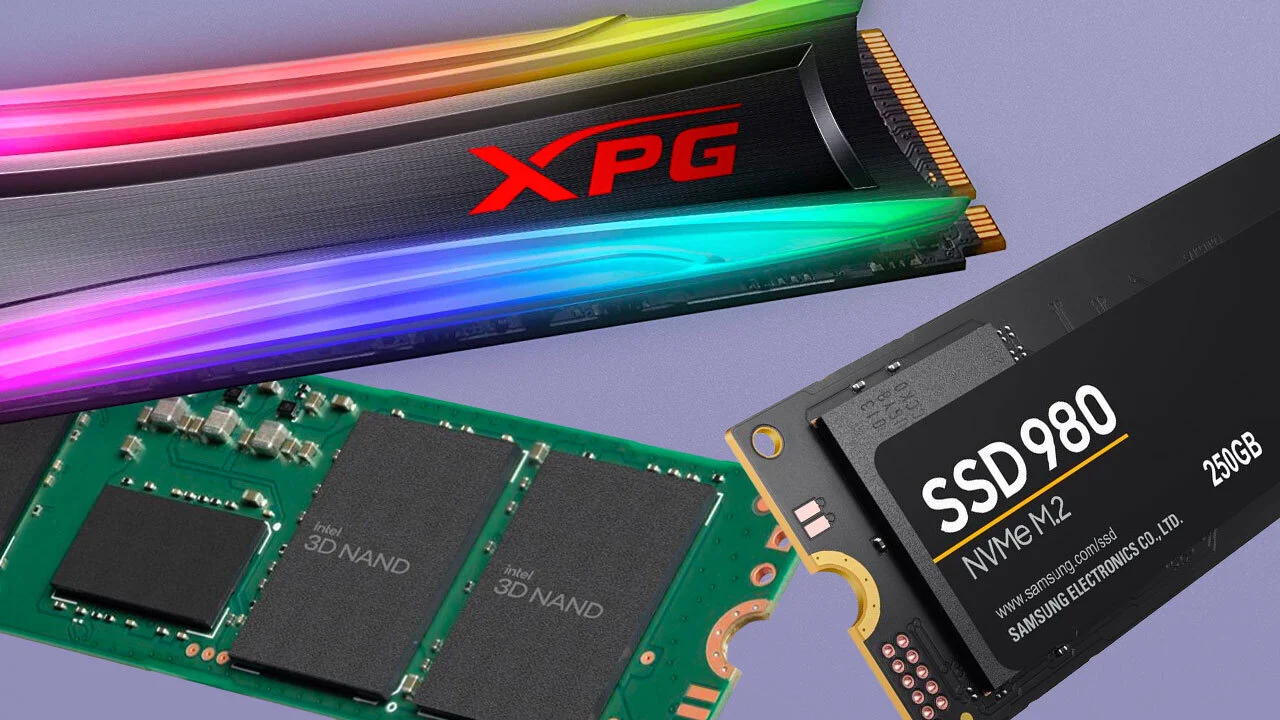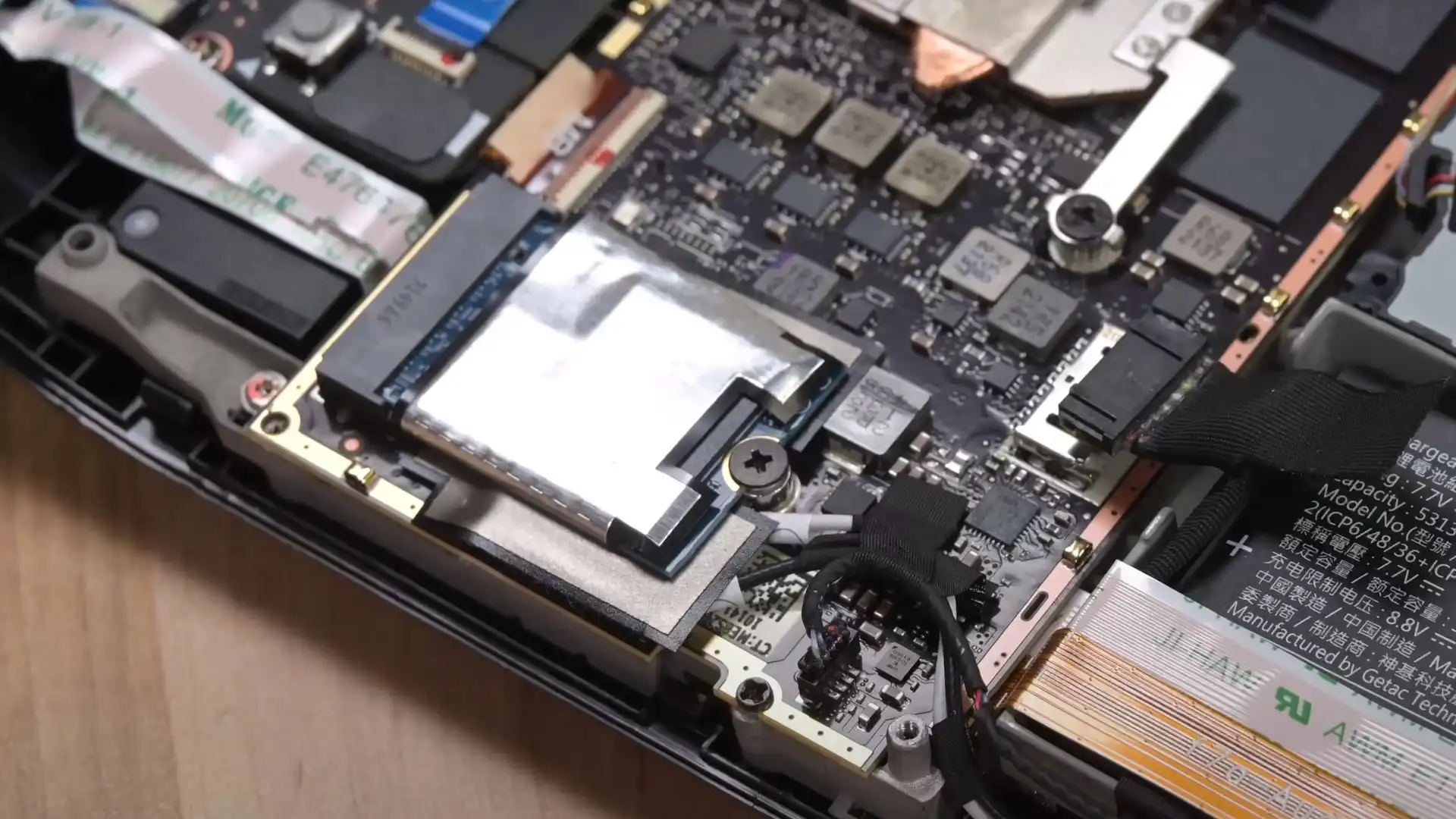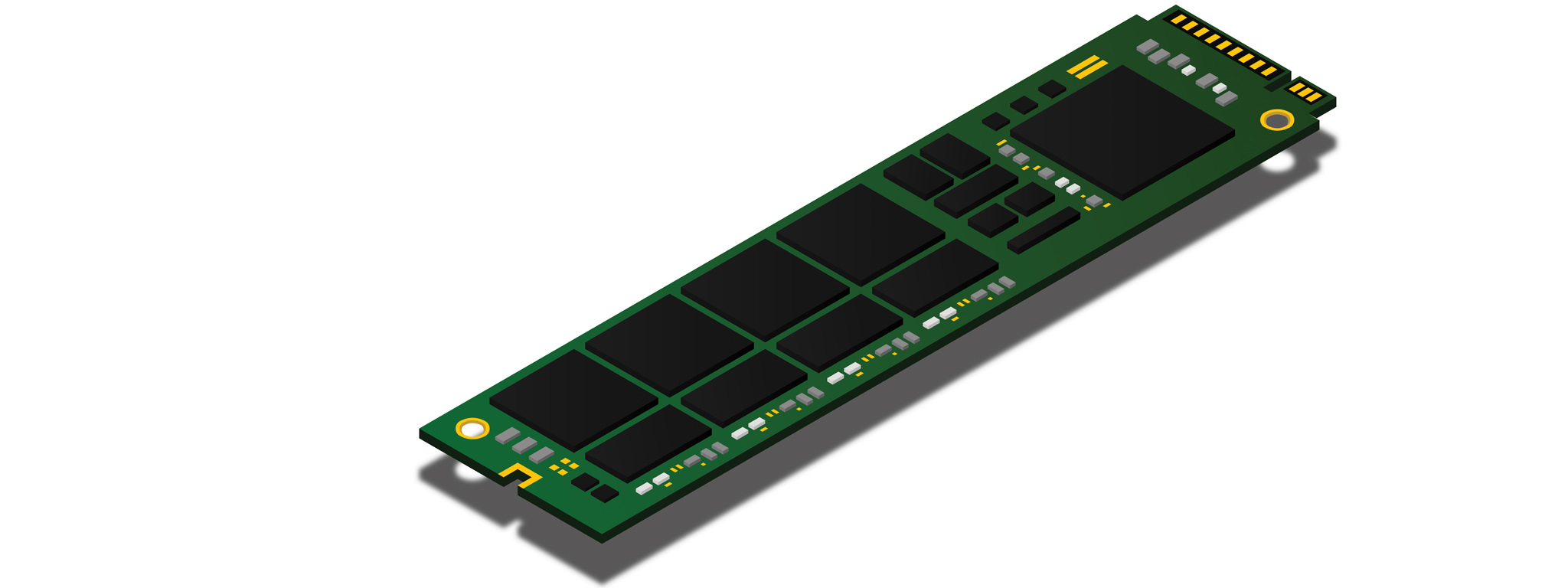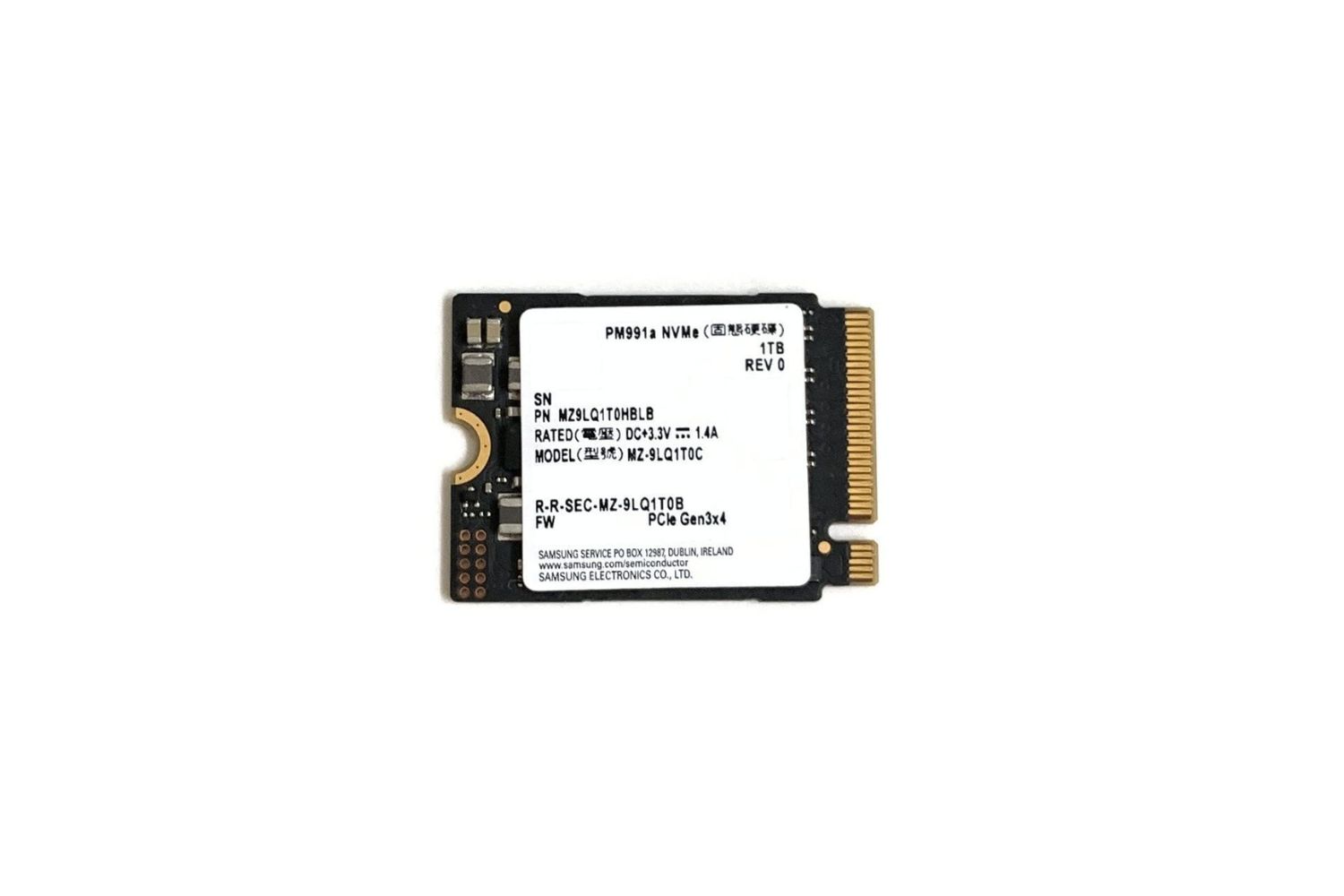Introduction
Welcome to the world of solid-state drives (SSDs) and Non-Volatile Memory Express (NVMe). As technology continues to advance, the need for faster and more efficient storage solutions has become a top priority for many users. Gone are the days of sluggish hard disk drives (HDDs) dominating the market. SSDs, with their lightning-fast performance and reliability, have taken the spotlight.
SSDs are a type of storage device that use flash memory chips to store data. Unlike HDDs, which rely on spinning disks and mechanical components, SSDs offer higher read and write speeds, reduced latency, and improved durability. They have become the go-to option for both casual users and professionals who require faster and more reliable storage for their computers.
However, with the advent of NVMe technology, the speed and performance of SSDs have been taken to a whole new level. NVMe is a protocol designed specifically for SSDs, allowing them to communicate directly with the computer’s processor and memory, bypassing traditional storage interfaces, such as Serial ATA (SATA). This direct communication path removes potential bottlenecks and significantly improves data transfer speeds.
In this article, we will delve deeper into the world of SSDs and NVMe, exploring their capabilities and highlighting the differences between them. We will also take a look at the factors that impact their speed, the performance implications for gaming and professional workloads, and the pricing considerations.
So, if you’re curious about which is faster between NVMe and SSDs, buckle up and join us on this exciting journey.
Understanding SSDs
To truly appreciate the advancements of NVMe, it’s essential to have a solid understanding of SSDs. SSDs work on the principle of using flash memory chips to store and retrieve data quickly. Unlike traditional HDDs, which use mechanical components, SSDs have no moving parts, making them faster, quieter, more durable, and less prone to damage.
SSDs store data in NAND flash memory cells. These cells can be quickly accessed, enabling faster read and write speeds. When data is stored on an SSD, it is distributed across these cells, allowing for simultaneous access to multiple locations, which ensures faster retrieval.
There are two main types of SSDs: SATA SSDs and PCIe SSDs. SATA SSDs connect to the computer through the Serial ATA interface, which limits their data transfer speeds to around 600 megabytes per second (MB/s). While this is significantly faster than HDDs, it falls short compared to the potential speeds of PCIe SSDs.
PCIe SSDs, on the other hand, use the PCIe interface, which allows for much higher data transfer rates. PCIe SSDs can take advantage of multiple lanes, resulting in read and write speeds that can reach several gigabytes per second (GB/s). This makes them ideal for demanding applications that require large amounts of data to be processed quickly.
SSDs also differ in terms of the type of memory they use. The most common types are Single-Level Cell (SLC), Multi-Level Cell (MLC), and Triple-Level Cell (TLC). SLC SSDs store one bit of data per cell, offering better performance and durability but at a higher cost. MLC SSDs store two bits per cell, striking a balance between performance and affordability. TLC SSDs store three bits per cell, providing higher storage capacity but sacrificing some performance and endurance.
SSDs have revolutionized the storage industry, providing faster boot times, quicker application launches, and improved overall system responsiveness. As a result, they have become the preferred choice for many users, from casual gamers to professionals working with large datasets.
In the next section, we’ll dive into the world of NVMe and explore how it takes SSD performance to new heights.
Understanding NVMe
Now that we have a good grasp on SSDs, let’s explore the exciting world of Non-Volatile Memory Express (NVMe). NVMe is a protocol specifically designed for SSDs, aiming to unlock their full potential by minimizing latency and maximizing data transfer speeds.
The traditional storage interface for SSDs, such as Serial ATA (SATA), was designed with HDDs in mind. These interfaces were unable to fully utilize the speed capabilities of SSDs, resulting in bottlenecks and slower performance. NVMe addresses these limitations by creating a direct communication path between the SSD and the computer’s PCIe bus.
By connecting directly to the PCIe bus, NVMe SSDs can take advantage of the high bandwidth and low latency available, resulting in significantly faster data transfer rates. In comparison to SATA SSDs, NVMe SSDs can achieve sequential read and write speeds of over multiple gigabytes per second (GB/s), making them ideal for tasks that require high-speed data processing.
NVMe also revolutionizes the way data is accessed. Traditional storage interfaces, such as SATA, require commands to be sent sequentially. NVMe, on the other hand, allows for parallel command processing. This means that multiple commands can be executed simultaneously, resulting in reduced latency and improved overall system responsiveness.
In addition to its speed advantages, NVMe also introduces features like efficient power management and end-to-end data protection. These features help to optimize power usage and protect data integrity, ensuring that your data storage experience is both efficient and secure.
Although NVMe SSDs offer impressive performance gains, it’s important to note that the benefits of NVMe are most pronounced in scenarios that involve frequent large data transfers. For tasks like gaming, content creation, and professional workloads, NVMe SSDs can make a noticeable difference in load times, file transfers, and overall workflow efficiency.
With the increasing availability and affordability of NVMe SSDs, more users are opting for this advanced storage solution to harness the true power of their systems.
In the next section, we will compare the speed capabilities of NVMe SSDs and SATA SSDs to determine which one comes out on top.
Speed Comparison
When it comes to speed, the comparison between NVMe and SATA SSDs is where the real difference becomes apparent. NVMe SSDs, with their direct connection to the PCIe bus, are capable of achieving significantly faster data transfer rates compared to SATA SSDs.
To put it simply, SATA SSDs can reach read and write speeds of up to 600 megabytes per second (MB/s) due to the limitations of the SATA interface. While this is a substantial improvement over the speeds of traditional HDDs, it pales in comparison to the potential speeds of NVMe SSDs.
NVMe SSDs, on the other hand, can breach the barrier of gigabytes per second (GB/s) in terms of sequential read and write speeds. Depending on the model and configuration, NVMe SSDs can achieve speeds exceeding 3000 MB/s, providing a massive performance boost for tasks that involve large file transfers or data-intensive applications.
Another area where NVMe shines is random read and write speeds. Random read speed refers to the ability to access small, scattered data across the drive quickly. NVMe SSDs excel in this aspect, delivering much faster random read performance compared to SATA SSDs.
It’s important to note that the speed benefits of NVMe are most noticeable in scenarios that involve intensive workloads and large data transfers. For everyday tasks like web browsing, document editing, and media consumption, the difference in speed between NVMe and SATA SSDs may not have a significant impact on user experience.
However, for tasks like video editing, 3D rendering, and complex simulations, the faster data transfer rates of NVMe SSDs can result in substantial time savings and improved productivity.
Overall, while both NVMe and SATA SSDs offer significant speed improvements over traditional HDDs, NVMe takes performance to another level. If speed and performance are top priorities for your computing needs, opting for an NVMe SSD would be a wise choice.
In the next section, we’ll explore the factors that can affect the speed of both NVMe and SATA SSDs.
Factors Affecting Speed
While both NVMe and SATA SSDs offer faster speeds compared to traditional HDDs, there are several factors that can affect the actual speed performance of these storage devices. Understanding these factors can help you make informed decisions when choosing between NVMe and SATA SSDs.
First and foremost, the interface plays a crucial role in determining the speed of an SSD. As previously mentioned, NVMe SSDs utilize the PCIe interface, which provides a much higher bandwidth compared to the SATA interface used by SATA SSDs. The PCIe interface allows for faster data transfer rates and reduced latency, resulting in improved overall performance.
Another factor to consider is the generation of the PCIe interface used by NVMe SSDs. Newer generations, such as PCIe 3.0 and PCIe 4.0, offer higher bandwidth and faster speeds compared to older generations. It’s important to ensure that your system supports the PCIe generation required by your NVMe SSD to fully leverage its speed capabilities.
In addition to the interface, the type of NAND flash memory used in an SSD can impact its speed. SLC and MLC NAND flash memory generally provide faster performance compared to TLC NAND flash memory due to their lower bit density. However, advancements in TLC NAND technology have narrowed the speed gap between different types of flash memory, making TLC-based SSDs more viable for general use.
System configuration and optimization also play a role in SSD speed. A well-configured system with optimized drivers, firmware, and operating system settings can maximize the performance of both NVMe and SATA SSDs. Regular firmware updates and driver installations are essential to ensure optimal compatibility and performance.
It’s worth noting that while NVMe SSDs have the potential for faster speeds, other components of the system, such as the processor, memory, and chipset, also need to be capable of handling the increased data transfer rates. If the system components are not optimized to match the speed capabilities of the NVMe SSD, the overall performance may be limited.
Lastly, file sizes and types can also affect the speed performance of an SSD. Small file transfers may not fully utilize the speed capabilities of an SSD, while larger files can take full advantage of the faster transfer rates. Additionally, certain file types, such as compressed files or encrypted files, may result in reduced speed due to the additional processing required.
Considering these factors can help you determine which SSD option, NVMe or SATA, is best suited for your specific needs and system configuration. In the next sections, we’ll explore the impact of these speed differences on gaming performance and professional workloads.
Gaming Performance
Gaming performance is greatly influenced by the speed and responsiveness of the storage device. Whether it’s loading times, game installations, or asset streaming, a faster storage solution can significantly enhance the gaming experience.
When it comes to gaming, NVMe SSDs have the upper hand in terms of speed. The faster data transfer rates and reduced latency of NVMe SSDs can result in shorter loading times for games. This means that you can jump into your favorite games faster and spend less time waiting for levels or maps to load.
In open-world games or games with large environments, NVMe SSDs can also improve asset streaming. As you explore the game world, assets such as textures and models need to be loaded in real-time. The faster read speeds of NVMe SSDs allow for seamless asset streaming, reducing pop-in and improving overall visual fidelity.
The speed of the storage device can also impact game installations and updates. With larger game sizes becoming increasingly common, transferring the game files quickly becomes essential. NVMe SSDs excel in this regard, allowing for faster game installations and updates. This means less time waiting for games to install or update and more time playing.
Additionally, NVMe SSDs can enhance the performance of games that rely on streaming assets from disk, such as open-world games or MMOs. These games constantly load and unload assets as you navigate through the virtual world. With an NVMe SSD, the constant data access results in faster asset loading, smoother gameplay, and reduced stuttering.
While SATA SSDs still provide significant improvements over traditional HDDs, the speed advantage of NVMe SSDs can enhance the gaming experience further. However, it’s important to note that the impact on actual in-game performance, such as frame rates, will be minimal since that is primarily influenced by the CPU and GPU.
Ultimately, if you are a passionate gamer and want to achieve the best possible gaming experience with faster loading times and improved asset streaming, investing in an NVMe SSD can be a game-changing addition to your setup.
In the next section, we will explore how NVMe and SATA SSDs perform in professional workloads.
Professional Workloads
Professional workloads often involve handling large files, processing complex data sets, and running resource-intensive applications. The speed and performance of the storage device can have a significant impact on productivity and efficiency in these scenarios.
When it comes to professional workloads, NVMe SSDs offer substantial advantages over SATA SSDs. Their faster data transfer rates and lower latency make them ideal for tasks that involve handling large files or working with demanding applications.
For professionals working with multimedia content, such as video editing or 3D rendering, NVMe SSDs can significantly reduce the time required for file transfer and data processing. Transferring large video files or rendering complex 3D scenes can be done much faster, allowing professionals to complete their projects more efficiently.
Data analytics professionals can also benefit from the speed of NVMe SSDs when working with large data sets. Whether it’s analyzing massive databases or running complex algorithms, the quicker data access provided by NVMe SSDs helps streamline the entire analytical process, saving valuable time.
Furthermore, professionals working with virtual machines or running virtualization software can take advantage of NVMe SSDs’ speed to improve performance and responsiveness. Loading virtual machines, running multiple instances simultaneously, and accessing virtual disks are all operations that can benefit from the faster data transfer rates and reduced latency of NVMe SSDs.
Overall, professionals in various fields such as content creation, data analytics, and virtualization can benefit greatly from the speed and performance of NVMe SSDs. The increased efficiency and reduced processing times offered by NVMe SSDs can lead to improved productivity and faster turnaround of projects.
However, it’s important to consider the specific requirements of your workflow and the performance demands of your applications. In some cases, SATA SSDs may still meet the speed requirements without the need for the higher cost of NVMe SSDs. Assessing your specific workload and considering the potential benefits of NVMe SSDs is key to making the right choice.
In the next section, we’ll take a closer look at the pricing considerations when comparing NVMe and SATA SSDs.
Pricing
Pricing is a crucial factor to consider when choosing between NVMe and SATA SSDs. While NVMe SSDs offer superior speed and performance, they typically come with a higher price tag compared to SATA SSDs.
The cost difference between NVMe and SATA SSDs can be attributed to several factors. First, the manufacturing process for NVMe SSDs is more complex, involving advanced components and technologies that contribute to higher production costs. Additionally, the higher demand for NVMe SSDs, especially in the enthusiast and professional markets, can also drive up their prices.
SATA SSDs, on the other hand, have been on the market for a longer time, resulting in a more mature and established production process. This leads to lower production costs, allowing SATA SSDs to be more affordable for consumers.
It’s important to note that the price difference between NVMe and SATA SSDs can vary depending on the specific brands, models, and storage capacities. In some cases, the price disparity may be minimal, making the upgrade to NVMe SSDs an attractive option, especially if you require the higher speed and performance for your workflow.
However, for budget-conscious consumers or those with less demanding tasks, SATA SSDs can provide a viable and budget-friendly alternative. SATA SSDs still offer significant speed improvements over traditional HDDs and can enhance the overall performance of your system.
When considering the pricing, it’s essential to evaluate your specific needs and budget constraints. If speed and performance are critical to your workflow or if you rely on resource-intensive applications, investing in an NVMe SSD may be a worthwhile investment. On the other hand, if you have a limited budget or primarily engage in less demanding tasks, a SATA SSD can offer a cost-effective solution without compromising on significant performance improvements.
It’s always a good practice to compare prices, read reviews, and consider the performance benefits when making a decision between NVMe and SATA SSDs.
In the final section, we will recap the key points discussed throughout the article and provide a summary of the differences between NVMe and SATA SSDs.
Conclusion
In conclusion, when comparing NVMe and SATA SSDs, it’s clear that NVMe SSDs offer superior speed and performance due to their direct connection to the PCIe bus and faster data transfer rates. NVMe SSDs are well-suited for tasks that involve large data transfers, such as gaming, content creation, and professional workloads.
On the other hand, SATA SSDs still provide significant speed improvements over traditional HDDs and are more budget-friendly. SATA SSDs are a viable option for users who have less demanding tasks and are looking for a cost-effective storage solution that offers improved performance.
Factors such as the interface, NAND flash memory type, system configuration, and file sizes/types can all affect the speed performance of both NVMe and SATA SSDs. Considering these factors is crucial in determining the appropriate storage solution for your specific needs and budget limitations.
It’s important to note that while NVMe SSDs offer impressive performance gains, the benefits are most noticeable in scenarios that involve frequent large data transfers and resource-intensive applications. Everyday tasks like web browsing, document editing, and media consumption may not experience a significant difference in speed between NVMe and SATA SSDs.
Ultimately, the choice between NVMe and SATA SSDs depends on your individual requirements, budget, and the level of performance you desire. If speed and performance are paramount, investing in an NVMe SSD can provide a noticeable boost in overall system responsiveness and efficiency.
On the other hand, if you’re on a tighter budget or engage in less demanding tasks, a SATA SSD can still offer a substantial improvement over traditional HDDs without breaking the bank.
Take the time to evaluate your specific needs and goals, consider the pricing differences, and weigh the potential performance benefits when making your decision. Regardless of your choice, both NVMe and SATA SSDs represent significant advancements in storage technology, delivering faster and more reliable storage solutions compared to traditional HDDs.
In the end, whether you opt for the blazing speed of an NVMe SSD or settle for the impressive performance of a SATA SSD, you can enjoy a significant upgrade in storage performance and elevate your computing experience to new heights.







